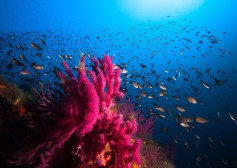Top 5 Inspiring Endangered Species Recovery Stories That Will Restore Your Hope
Across the globe, endangered species face significant challenges due to habitat loss, climate change, and human activity. However, thanks to dedicated conservation efforts and international cooperation, many of these species are bouncing back. Here are five inspiring recovery stories that highlight the resilience of nature and the power of committed conservation work.
The American Bald Eagle
Once teetering on the brink of extinction, the American Bald Eagle is a remarkable success story. In the mid-20th century, pesticide use led to dwindling populations as eggshells became too thin to support young eagles. Conservationists fought back by banning harmful pesticides like DDT and launching breeding programs. By 2007, they were removed from the endangered species list as their numbers soared past 10,000 nesting pairs across North America.

The Gray Wolf
The gray wolf’s recovery is a testament to effective wildlife management and legal protection measures. Historically hunted to near extinction in the lower 48 states due to fear and misunderstanding, wolves have made a comeback since being reintroduced into Yellowstone National Park in 1995. Their return has not only revitalized ecosystems but also restored their population in several states where they now thrive.
The California Condor
The California condor was once reduced to just 27 individuals in the 1980s due to poaching and lead poisoning from ingested bullets. A controversial captive breeding program began, with biologists raising condors in captivity before releasing them into their natural habitat. Today, thanks to these efforts and ongoing conservation work that includes reducing lead ammunition usage, there are over 500 California condors flying across parts of California, Arizona, Utah, and Mexico.
The Humpback Whale
Once severely hunted for their blubber during commercial whaling operations throughout the 20th century, humpback whales have made an impressive recovery since whaling ceased in 1966 when they were listed under the Endangered Species Act. Effective marine protections have led populations around North America to rebound significantly; estimates suggest numbers now exceed approximately 80,000 individuals globally thanks to protective measures that safeguarded their habitats.
The Eastern Black Rhino
The eastern black rhinoceros faced severe population declines due primarily to poaching for their horns and habitat destruction in Africa. Through intensive anti-poaching campaigns combined with community-based conservation initiatives that encourage local communities’ involvement in protecting rhinos through eco-tourism benefits and education programs—populations have begun stabilizing with about 740 individuals counted today compared with just a few hundred at one point.
These recovery stories remind us that while challenges remain for many endangered species worldwide, dedicated efforts can yield inspiring results. By supporting conservation organizations or advocating for wildlife protection policies locally or globally—everyone can contribute towards ensuring these incredible animals continue thriving for generations to come.
This text was generated using a large language model, and select text has been reviewed and moderated for purposes such as readability.


